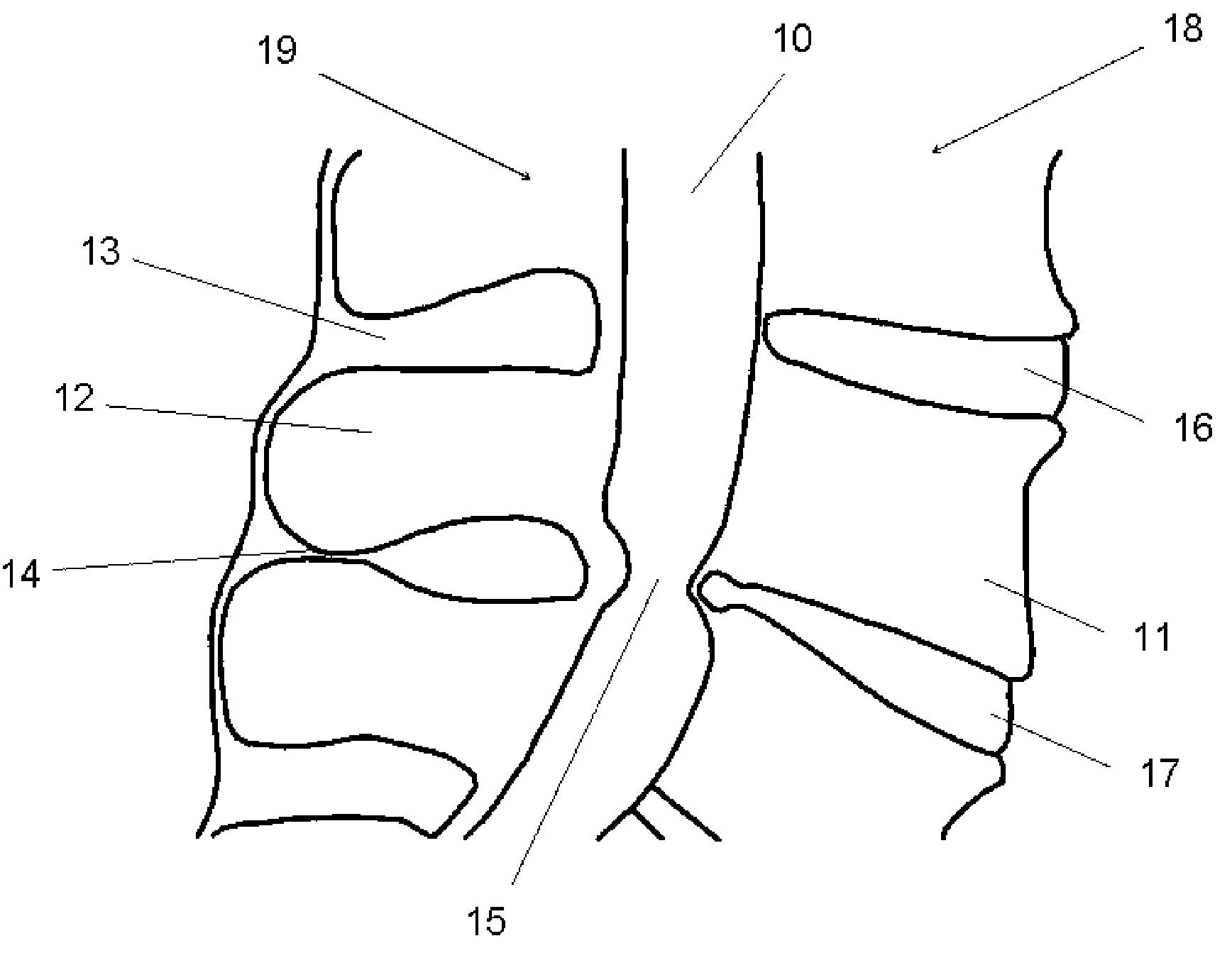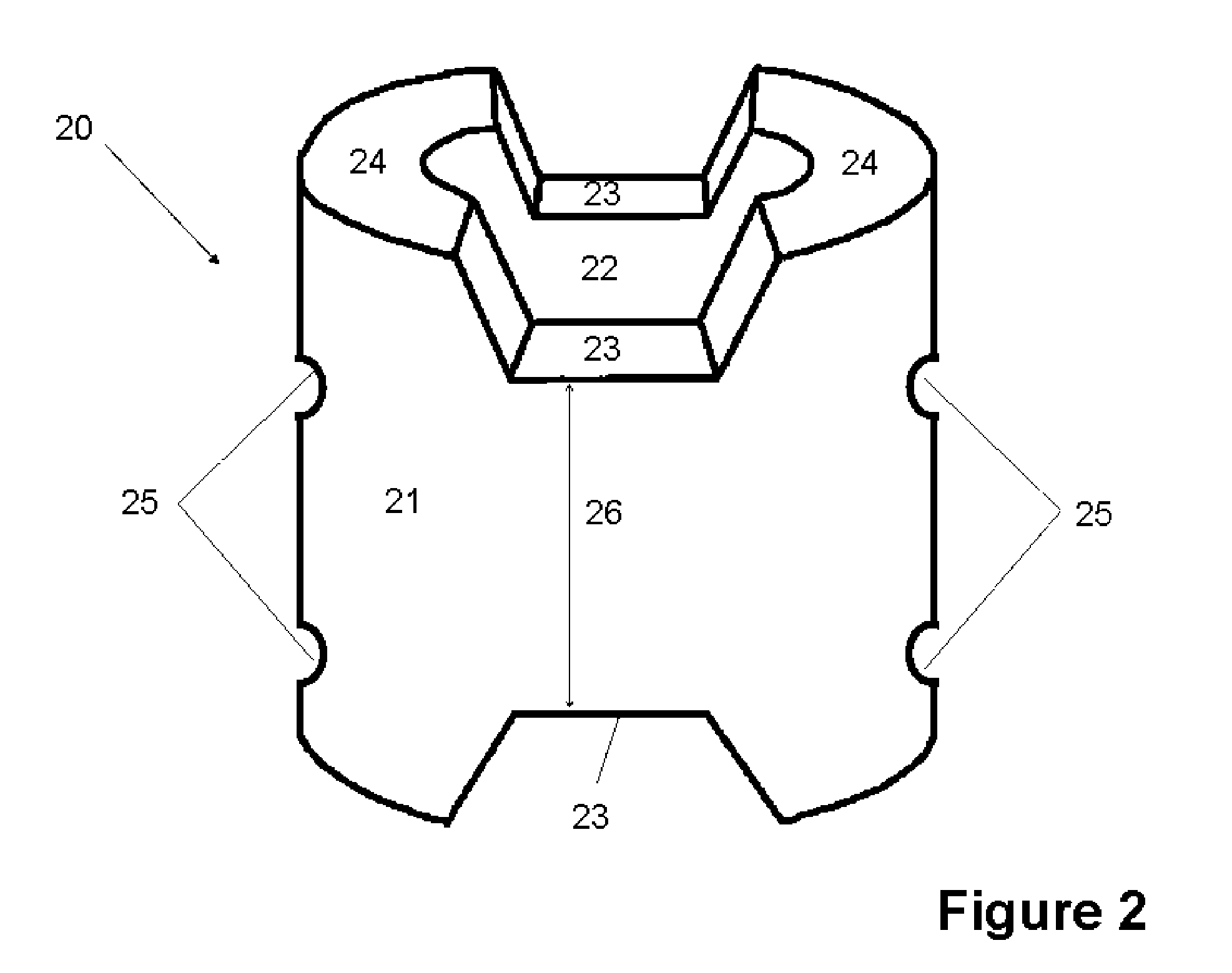Spinous process spacer implant and technique
a technology of spacer and spacer body, applied in the field of spinal stenosis treatment devices and methods, can solve the problems of non-biological, multi-piece design, wear and implantation complexity, and the device's expansive geometry may not lend itself to minimally invasive surgical techniques,
- Summary
- Abstract
- Description
- Claims
- Application Information
AI Technical Summary
Benefits of technology
Problems solved by technology
Method used
Image
Examples
Embodiment Construction
[0061]The term “allograft”, as used herein, is intended to mean a graft taken from a different individual of the same species.
[0062]The term “sagittal plane”, as used herein, is the plane which splits the body into left and right segments. The mid-sagittal, or median plane splits the body into equal left and right halves.
[0063]The term “coronal plane”, as used herein, is the plane that separates the body into anterior and posterior (front and back) segments. The coronal plane is perpendicular to the sagittal plane.
[0064]The term “posterior process fusion”, as used herein, describes the fusion of adjacent spinous processes firstly to the spinous process spacer implant, and eventually to each other via the growth of tissue through the axial conduit of the implant.
[0065]The function of the spinous process spacer (20) can be understood by appreciating the problem illustrated in FIG. 1. A cross section of the spinal cord (10) in the mid-sagittal plane is shown with the vertebral body (11...
PUM
 Login to View More
Login to View More Abstract
Description
Claims
Application Information
 Login to View More
Login to View More - R&D
- Intellectual Property
- Life Sciences
- Materials
- Tech Scout
- Unparalleled Data Quality
- Higher Quality Content
- 60% Fewer Hallucinations
Browse by: Latest US Patents, China's latest patents, Technical Efficacy Thesaurus, Application Domain, Technology Topic, Popular Technical Reports.
© 2025 PatSnap. All rights reserved.Legal|Privacy policy|Modern Slavery Act Transparency Statement|Sitemap|About US| Contact US: help@patsnap.com



